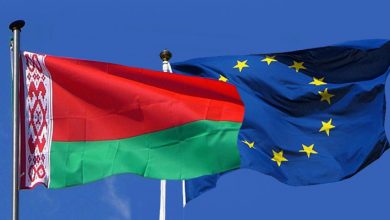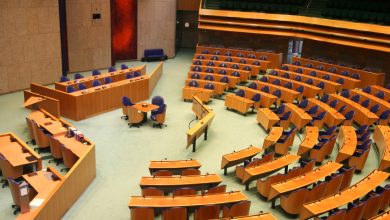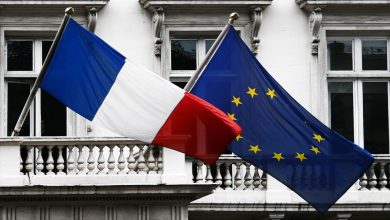Norwegian Elections: All You Need To Know

On September 11, Norwegian citizens will be called to vote in order to elect the Storting, the single parliamentary chamber of their legislative, for a new four-year term. With no possibility of calling by-elections or dissolving the Parliament before the end of its term, national elections are a crucial moment in Norway.
Both the EU and Member States are invested in the results of these elections, as they will set the tone for the next four years of collaboration between them. While the Scandinavian country is not part of the European Union and it doesn’t seem interested in joining any time soon, its close status as an EFTA State make it a fundamental partner.

Electoral System
The Storting is made up of 169 seats, each one up for grabs in these elections;

to achieve a working majority, any party or coalition needs to gain at least 85 seats. These are allocated according to proportional representation in each of Norway’s 19 electoral counties, with 19 seats set aside as at-large seats in order to even out any discrepancies between voting at district and national level.
Norwegian citizens don’t vote for individual candidates, but for an electoral list, according to the principle of direct election. These voting lists are numbered so that each party’s most important candidates are at the top of the list and the less important candidates toward the bottom of the list. It is however possible for voters to personalise the ballot list by changing the order or striking out certain candidates. For this to have any effect in the elections, changes next to the same candidate name must be made by more than half of the voters in the district who have voted for that party.
Main Parties
Traditionally, the race as biggest party has been disputed between two main parties, the social-democratic Labour and the centre-right Conservatives. However, Norway has a tradition of minority governments. It is unusual for any single part to have enough support to govern alone, and working majorities are usually only achieved with the support of other parties. Because of this, the remaining six parties in Norwegian politics have a big role to play as emergent king-makers in the elections, enabling either the Conservatives or Labour to form a government.

This was, for example, the case of the incumbent Norwegian government. The 2013 elections had seen Labour as the most popular party, however its 30% had not been enough to guarantee a working majority. Without enough support from third parties, Labour failed to form a government. It was then the Conservatives together with help of the right-wing, libertarian Progress Party, to try and form a minority government, which they managed thanks to a confidence and supply agreement received from two other centrist parties, the Liberals and the Christian Democrats.
On the centre-left end of the political spectrum we can find the biggest party in the Storting, the Labour Party. The impact of further left-wing parties in the Storting is quite limited: in 2013, the Greens and the Socialist Left only gained 8 seats overall, and there has been no change in their popularity trend.
Main Issues
Economic issues have been at the centre of this electoral battle. Labour and left-wing parties are proposing tax increases, and have pledged to reverse two-thirds of the 21 billion krone (€2.3 billion) in tax cuts implemented since 2013. On the other hand, the Conservatives and the Progress Party warn that this could hurt the economic recovery of the country by stifling investments of those who are creating more jobs, and are instead proposing further tax cuts. In addition to tax cuts, they are also proposing to continue the massive public expenditures in infrastructure and a complete overhaul of the public sector, in particular merging municipalities together.

Another strong point of disagreement between the government and the left-wing opposition concerns job security. With the support of Norwegian Trade Unions, Labour has been staunchly against the liberalisation in temporary hiring, locally agreed job rotation schemes, and more flexible working time proposed by the coalition government. And of course, oil is as always a hot topic in Norwegian politics.
Currently, the Scandinavian country has a very generous oil tax regime for companies, which allows them to reclaim 78% of the costs for “failed exploration campaigns” . This measure was hailed as a risk-reducing incentive with the benefit of boosting activity of small and medium-sized conies, as well as international players in the oil business. The Conservative and Progress Parties have strongly rejected suggestions that this should be changed, while Labour has been calling for discussions on the impact of oil drillings on climate change. The environmentalist Greens, who are historically opposed to oil drillings, have even assured their support to the social-democratic party in exchange for the promise that a left-wing coalition government would campaign to stop oil and gas explorations.
Polls
Thanks to the growing Norwegian economy under their lead, the Conservatives seem to have overtaken Labour for the first time in 93 years in an opinion poll for public broadcaster NRK, with 25.7% and 24.4% respectively. The current minority government is prospected to just scrape by a working majority, which would make it the first centre-right administration to serve two full terms in Norway’s history.

However, the race is really too close to call, and the slightest misstep could still tip the balance. Much rests on how much the smaller parties manage to achieve, and whether they decide to put their weight behind Labour or the Conservatives. Two particular wildcards in the upcoming elections will be the centrist Christian Democrats and the Centre Party: both Labour and the Conservatives are trying hard to win them over, and it remains to be seen who will be successful.






One Comment